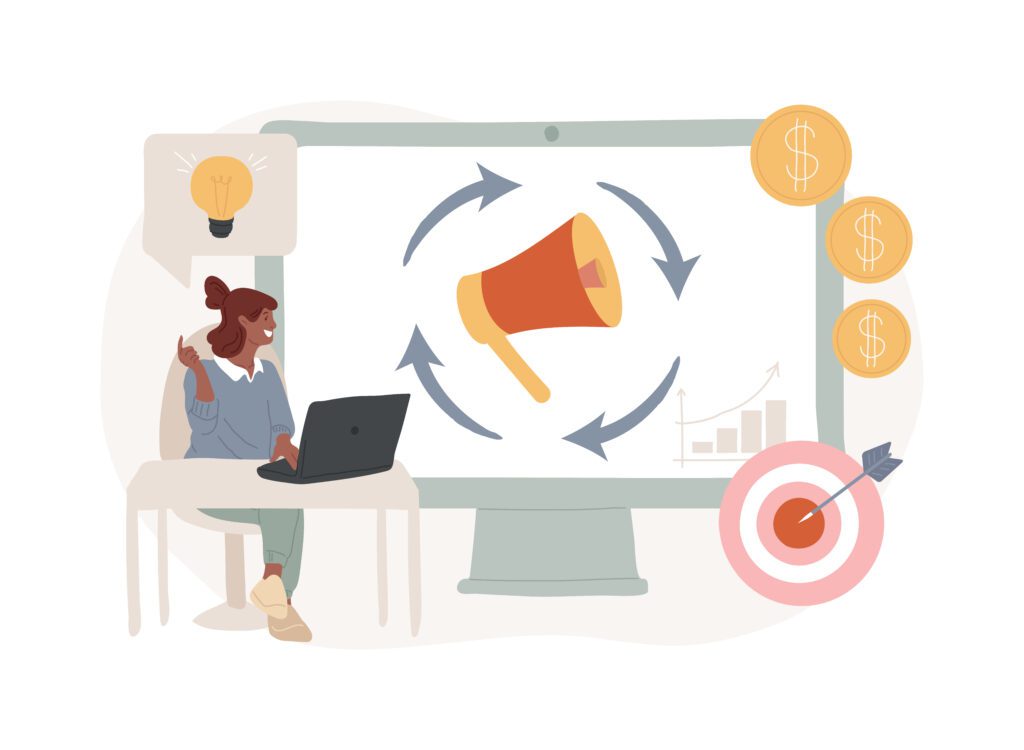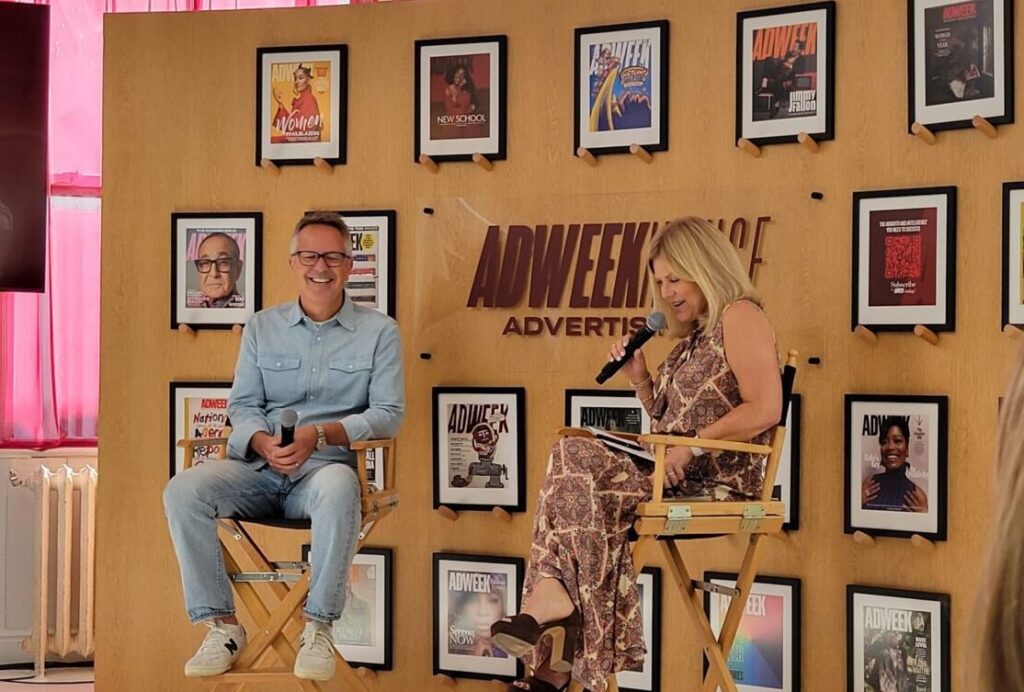Retail media ad spend is big. And getting bigger. The retail media channel is growing quickly, and retailers do not have a playbook to follow when looking to boost sales and increase conversion. Multichannel Marketer chatted with retail leaders to provide four tips on how to navigate the new channel.
Research firm EMarketer estimates U.S. marketers will spend $54.85 billion in omnichannel retail media ad spend in 2024, which includes ads in a retailer’s physical store and online. This is a 26% lift over 2023 and represents 14.1% of total media ad spending in 2024, the research firm estimates.
Dozens of retailers now allow brands to use their first-party data to buy advertising spots on their websites, in-stores and other properties, including Amazon, eBay, The Home Depot, Kroger, Macy’s, Michael’s, Ulta, Walgreens, Walmart and Wayfair. And each quarter more retailers add themselves to the roster and announce a new ad network for brands.
For retailers, retail media has opened a new revenue stream. For brands, the platforms allow them to target shoppers using a retailer’s first-party data at the location where consumers are already shopping and likely to buy.
Top brands Liquid I.V. (owned by Unilever), Nalgene (owned by Thermo Fisher Scientific) and Ghirardelli Chocolate Company (owned by Lindt &Sprüngli) share retail media advertising tips, which can help guide others in this increasingly crowded landscape.
Tip No. 1: Strategically choose which networks to advertise on and have a tailored plan for each
Not all retail media networks are created equally. And because retailers do not have a standardized system for how to buy spots or even attribute sales, retail marketers need to be judicious on which platforms they choose to invest their time and dollars. Retailers then need to create a strategic program for each network to ensure their ads are effective.
Liquid I.V., for example, actively advertises on retail media networks Amazon, Target, Walmart, Costco, DoorDash and Instagram, said Danielle Fessenden, Liquid I.V.’s senior director of Amazon and omnichannel.
When Liquid I.V. begins selling its hydration products on a larger retailer site, if the website offers a retail media network, the brand will most likely buy ads right from the start, Fessenden said. First, Liquid I.V. will buy category-level ads, such as “electrolytes.” Slowly, it will start to buy ad spots for its branded terms.
This strategy works across-the-board for Liquid I.V., but that’s not always the case for brands. Water bottle brand Nalgene, for example, has an extremely effective advertising program on Amazon.com, but discontinued its pilot on Target’s retail media network because it wasn’t producing results, said Eric Hansen, director of marketing at Nalgene.
“It just was not as effective,” Hansen said about its ads on Target’s media platform. “I just think those ecosystems are so different. Amazon is just such a different beast. We’ve been there for so long.”
For Nalgene, it’s return on investment is immediate on retail media network, so if a program isn’t working, Nalgene immediate knows and can pivot, Hansen said.
Tip No. 2: Tap into resources across teams
Chief marketing officers need to decide how they will manage this new channel of advertising, such as in-house or outsourcing to an agency.
If in house, retailers should use resources across departments to create the most effective ads, such as copywriters and data teams.
At Ghirardelli Chocolate Company, its retail media team is using artificial intelligence software that its product content team is the primary user of. The AI tool evaluates the effectiveness of images at converting shoppers and provides a score to guide brands into choosing the best image, said Pam Perino, digital content operations and development manager at Ghirardelli Chocolate Company.
“Our retail media manager has been starting to use the platform to measure potential banner ads and things like that and look and see which one is more engaging than the other ones,” Perino said. “It’s exciting to see the tool being used by more cross-functional team members and for different use cases.”
Tip No. 3: Set benchmarks for ad spend on each product
Brands need to set a benchmark for each product for the ideal threshold of sales derived organically and the ideal derived via ad spend.
For example, if a consumer searches for a specific branded product and then clicks on a sponsored product listing for that ad instead of the organic results, the brand may have paid for an ad it didn’t need.
Both Liquid I.V. and Nalgene say that while having an ad presence is necessary, shoppers who have an intent to purchase their brands will click on the organic listing even if the site displays an ad.
“Usually we find customers — as long as we have that placement on the page — mostly they do still end up clicking a non-ad product,” Fessenden said. “They do recognize that ‘Oh, this is a sponsored product, I’m going to go to the other one.’ But as long as we kind of cover that page it helps.”
Liquid I.V. is continually evaluating each product’s organic sales vs. sales from ad clicks. It varies by product but a 50-50 split is a general guideline, she said.
“It’s constant levers that we’re pulling on,” Fessenden said “If we spend more on branded or spend more on non-branded, how is our organic versus ad sales? How does that correlate with one another?”
For new products, Liquid I.V. is OK if the breakdown is 100% ad-driven vs. organic. With no traffic to the listing page and no product reviews, retail media ads give new products a boost until they build up those metrics, she said. “We have to put effort into the getting the product seen by the customer,” Fessenden said.
And like the first tip, the split for organic vs. ad sales for each product may vary by which retailer the brand is advertising on.
Tip No. 4: Bidding on your own brand name is a must
“It sucks.”
“Is it fantastic? No.”
These quotes from retailers sum up the sentiment that a number of marketers in the industry may feel about having to bid on their own branded key words on retail media platforms.
But this is the state of the industry for brands looking for high conversion rates on the retail websites where they sell their goods.
“You got to be in the game,” Hansen said.
Liquid I.V. buys its own brand terms to give shoppers the convenience of having its brand there when shoppers are looking for it, Fessenden said.
“When your customers are looking for you as the brand, they want the convenience of making sure that you are on the top of page, above the fold,” Fessenden said. “So making sure that other competitors aren’t taking up that space.”
And that will happen, she said. If Liquid I.V. doesn’t bid on its branded terms, competitors could snatch the sale.
“Being the No. 1 powdered hydration company in America definitely puts a target on your back,” she said.
The landscape for advertising on retail media networks is still broad and yet to be standardized. Brands need to have a plan for each platform and for each product, plus be prepared to pivot if needed. Although not ideal, just like within search results, retailers should bid on their own branded terms to ensure top-of-the-page placement. But, by using resources from various teams, brands could have a successful new channel in which to acquire customers and grow sales.

 Network
Network

